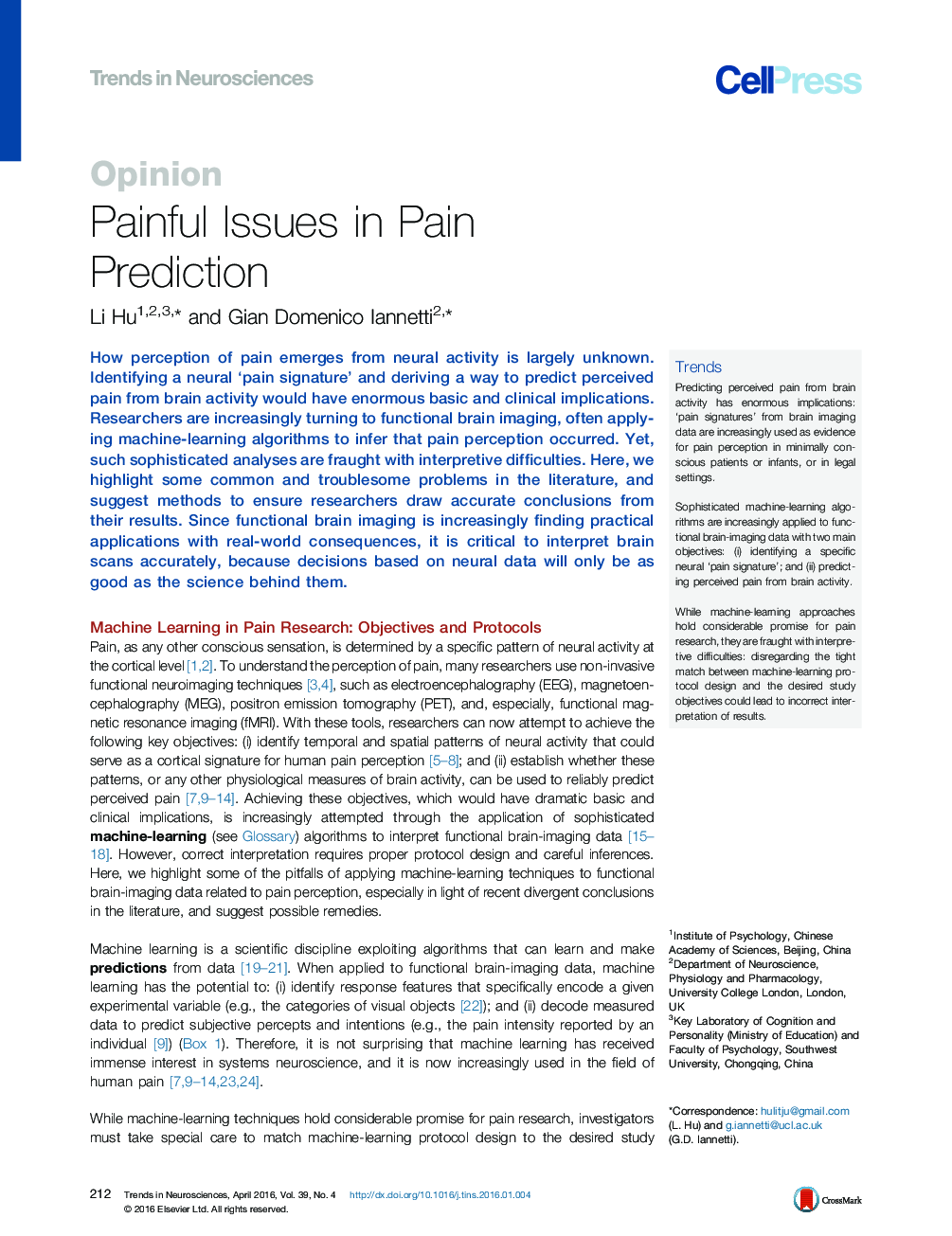| Article ID | Journal | Published Year | Pages | File Type |
|---|---|---|---|---|
| 4354148 | Trends in Neurosciences | 2016 | 9 Pages |
How perception of pain emerges from neural activity is largely unknown. Identifying a neural ‘pain signature’ and deriving a way to predict perceived pain from brain activity would have enormous basic and clinical implications. Researchers are increasingly turning to functional brain imaging, often applying machine-learning algorithms to infer that pain perception occurred. Yet, such sophisticated analyses are fraught with interpretive difficulties. Here, we highlight some common and troublesome problems in the literature, and suggest methods to ensure researchers draw accurate conclusions from their results. Since functional brain imaging is increasingly finding practical applications with real-world consequences, it is critical to interpret brain scans accurately, because decisions based on neural data will only be as good as the science behind them.
TrendsPredicting perceived pain from brain activity has enormous implications: ‘pain signatures’ from brain imaging data are increasingly used as evidence for pain perception in minimally conscious patients or infants, or in legal settings.Sophisticated machine-learning algorithms are increasingly applied to functional brain-imaging data with two main objectives: (i) identifying a specific neural ‘pain signature’; and (ii) predicting perceived pain from brain activity.While machine-learning approaches hold considerable promise for pain research, they are fraught with interpretive difficulties: disregarding the tight match between machine-learning protocol design and the desired study objectives could lead to incorrect interpretation of results.
